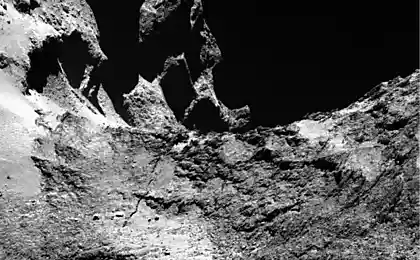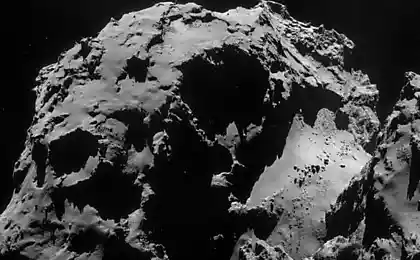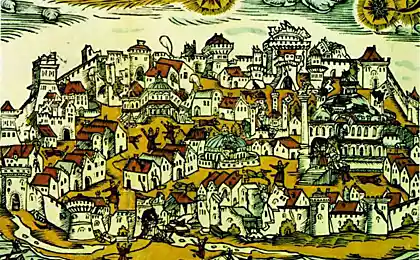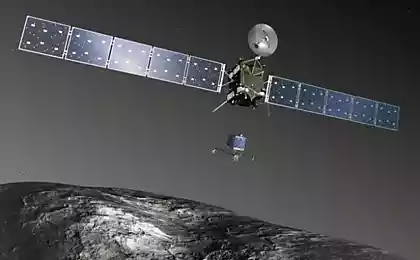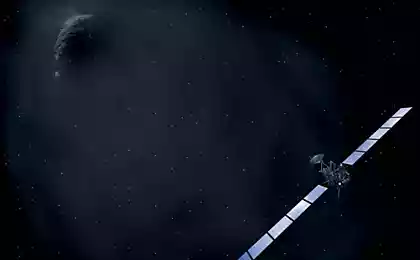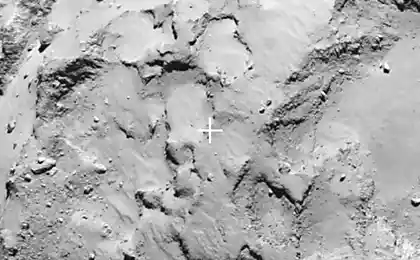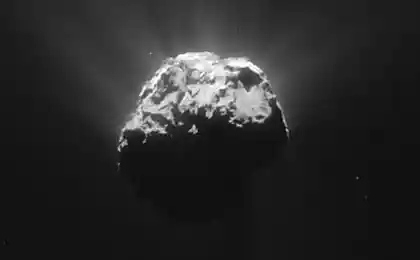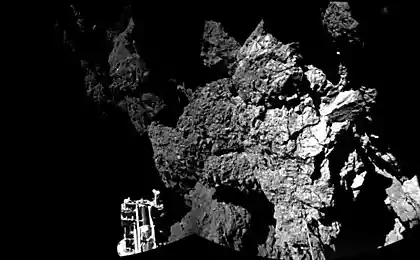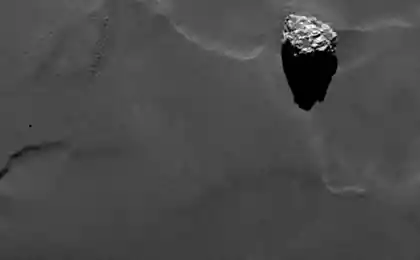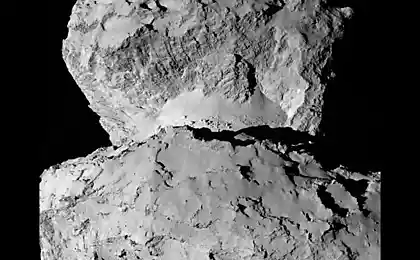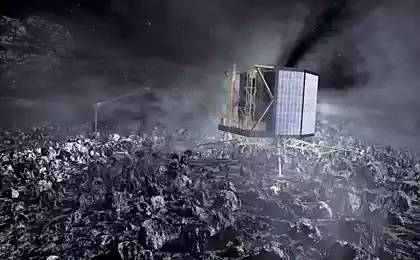1294
In ESA chose five potential sites on the comet Churyumov-Gerasimenko for landing probe Philae / Rosetta
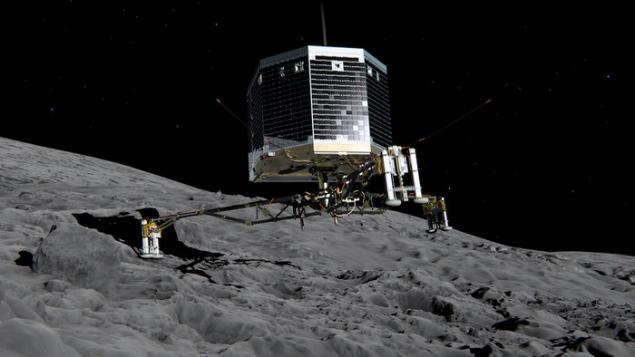
Perhaps it will look so landing probe
November is getting closer, and thus getting closer and the date of the landing of a probe on the surface of Philae comet Churyumov-Gerasimenko. We all look forward to this moment, but the wait is long, especially as in ESA (European Space Agency) is actively working on the selection of the landing site of the probe.
Here is the error simply unacceptable, any, the smallest mistake failure threatens the entire mission. Of course, the station itself Rosetta has already received a huge amount of data about the comet (these data the agency laid a month or two after the receipt), but the best hope lies with the probe Philae.
That probe will clarify the substance of the comet, giving scientists another batch of interesting information which, it is hoped, will clarify the process of the formation of comets and the conditions of formation of our solar system.
So, now select five potential sites for planting. When selecting the scholars the following criteria:
- the availability of sunlight, 6 hours a day or more;
- reliable communication with the device;
- No risk of overheating the device;
- Safety at landing.
There are other criteria, but these - basic.
Total identified five "candidates»:
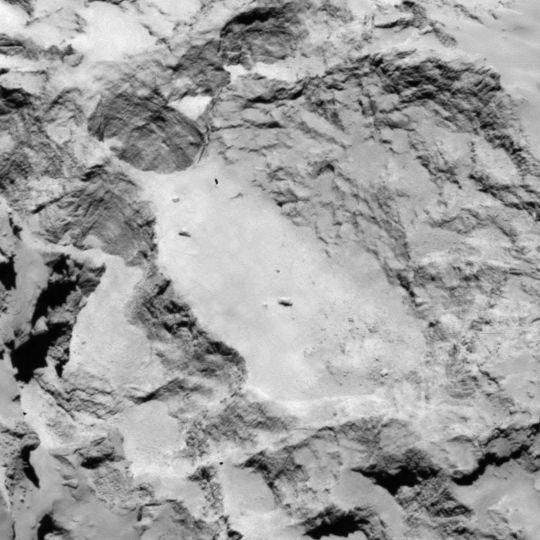
Area A. This area is located on the large "Hemisphere" comet. Requires a higher quality picture for detailed site assessment. In this picture the small details of the funnel and convexity may not be visible. I>
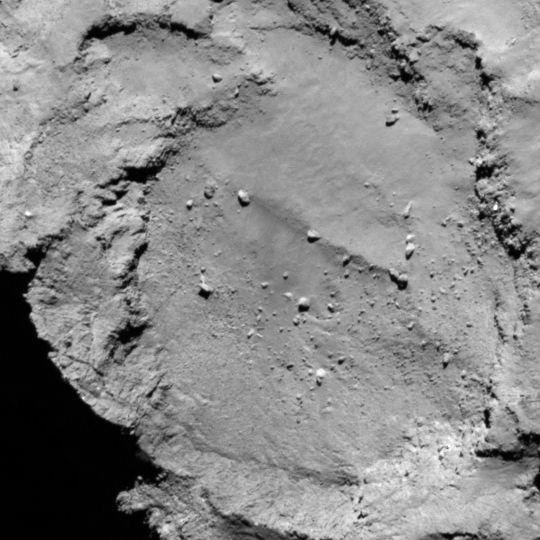
Area B is located in a crater-like structure on the smaller "Hemisphere" comet. Here all is well, but scientists do not fully clarified the situation with the lighting of this area in the long term. Need a photo in better resolution. Among other things, see the boulders that are dangerous. I>

From the site is located on a large "hemisphere". The surface is not very flat and has a funnel and convexity and other elements. Again, it requires a high-quality image. I>
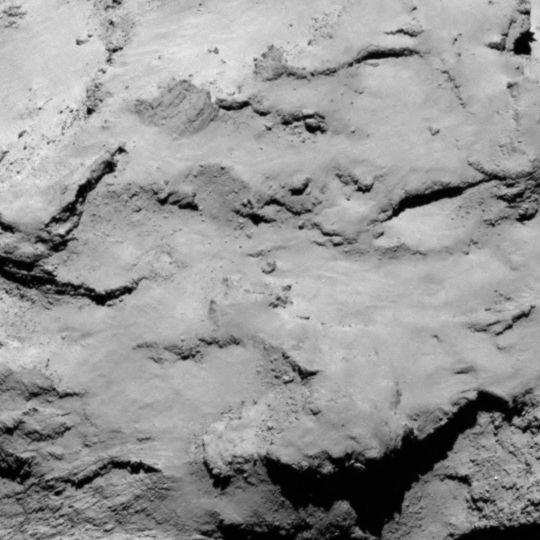
I site is relatively flat, is situated at a smaller "hemisphere". As in previous cases, we need better photos. It is also unclear how the light changes the site over time. I>

Golf J. This area is similar to the previous one. Problems - the same as in the previous case. I>
Now scientists are working on the assessment of each of the sites, and try to choose the most convenient and safe place to land a probe. By the way, shortly station Rosetta must move closer to the comet at a distance of 50 kilometers (now - about 100), so scientists hope to get a more detailed picture of potential sites.
By September 14 Rosetta will be even closer to the body of the comet - at a distance of 20-30 kilometers, so that the image of the comet will be even better. Scientists will be able to choose a major and a spare area.
Estimated date of the landing of the probe - November 11, and site selection should be made by 12 October. Of course, all this work is very complicated, you need to consider a whole range of external factors. But scientists are ready for this.
Via esa
Source: habrahabr.ru/post/234691/
At Harvard, created a 25-dollar mini-laboratory for determination of a number of diseases
University of Florida removed from the library of paper books










